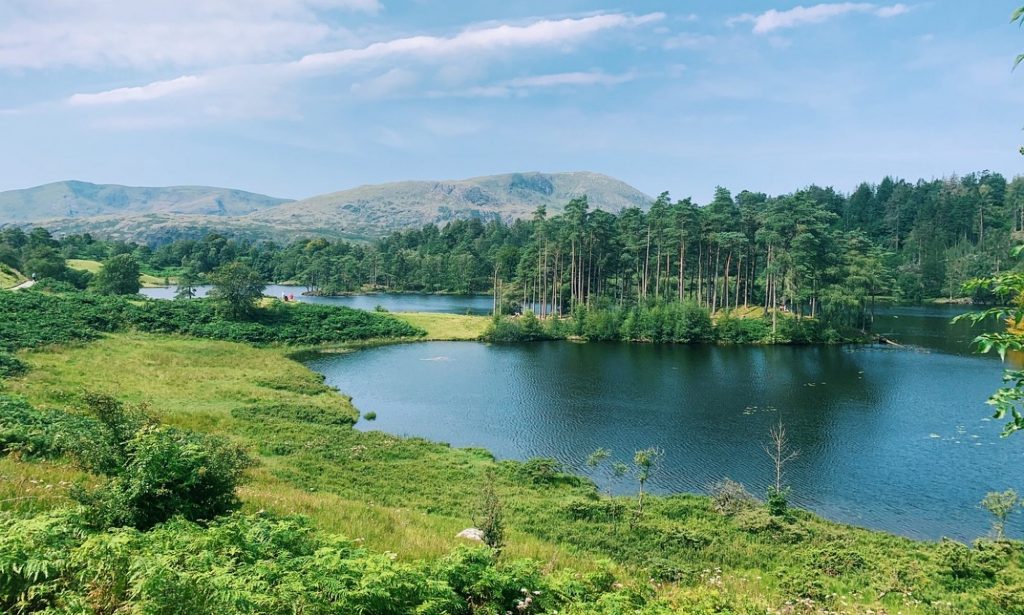To further my stakeholder engagement I had a very informative and interesting conversation with Dr Nigel Oseland who is an Environmental Psychologist at UCL. Nigel is an internationally recognised expert on the impact of design on performance, specialising in applying biophilic design in the workplace. Additionally, Nigel is in the process of writing a book ‘Beyond the Workplace Zoo: Humanising the Office’ which covers many of the topics we discussed in a workplace context. Consequently, I discussed with him the application of biophilic design in spaces and how this could be applied to hospitality settings, rather than the workplace.
Key Take-Aways from the Discussion:
- Biophilic design and bringing in nature to the built environment incorporates a lot more than just plants
- Focus also upon light, sound, water and form
- Daylight, patterns, fluctuations eg: fountains outside CSM bringing in water and amphitheatre around canal to bring people together, we are social animals
- Looking back at evolution, we are social animals and we communicated and told stories before we could read or write. Biophilia connects to this intrinsic link to socialising in a way as we are a part of the natural environment as social animals and so we can use the natural world to facilitate our need for socialising.
- For instance, sound plays a huge part in hospitality spaces with echoes being particularly difficult as people get older the lose the speech frequencies in hearing due to evolution; meaning they find it tricky to hear the person that they actually came to the space to meet with when the space is very loud and echoey
- Soundscapes – water and bird song
- Sound in evolution – too loud – fight or flight rection, too quiet – danger
- Managing the correct levels of sound is an element if biophilic design that is rarely considered
- Focus also upon light, sound, water and form
- The importance of the Terrapin Bright Green “14 Patterns of Biophilic Design” study in terms of design elements and styles
- I have already explored this on the surface in my blog, but I will revisit it and unpack it further over the coming weeks
- Creating spaces for different settings/ moods
- Spaces for contemplation and relaxing, spaces for socialising, etc
- Developing almost customisable spaces depending on how you are feeling, and utilising nature revitalise the spaces and to achieve the desired atmosphere in each space
- This can be especially interesting when looking at hotel spaces and making the rooms very different from each other and the guest and select the room depending on their mood
- Designing for different personality types
- Eg: introverted vs extroverted
- Introverted: comfortable own company, prefer calm spaces and tend to think things through more
- Extroverted: like to be stimulated by the environment, low levels of arousal
- Choose rooms based on personality type? Not just mood? – again links to creating a choice or range of spaces rather than designing for the average person, just generally results in not fully targeting anyone
- You don’t target marketing to the average person, it is always targeted to specific markets, so why don’t we do this in hospitality spaces?
- Nature sparking creativity and reenergising spaces
- Using wellbeing as a measure can be tricky, there is possibly more value in measuring social interaction
- Hedonic wellbeing
- Eudaimonic wellbeing
- Wellbeing consists of a multitude of factors that are generally long term, it is hard to pick up utilising the wellbeing scales of measurement over the short term
- Short term ‘wellbeing’ I am mostly likely to pick up is more around satisfaction and comfort, less fundamental changes
- Wellbeing is also very heavily focused upon in studies, social interaction is less so
- Wellbeing is such a massive subject; social interaction is a bit more tangible
- Measuring social interactions – possibly do an observation/ utilisation study, of how often the spaces are used. Are people voting with their feet, is one type of biophilic design preferred over another? Is one type of design used more for solo activity and another more for group activities?
- Record popularity of spaces against set criteria to measure the success of those elements in the space
- Possibility to utilise photoshop modelling or images of biophilic elements in different hospitality spaces and gather responses over what aspects people like and dislike, as a form of intervention
Reflection:
After talking with Nigel, it became apparent that focusing upon measuring social interactions in hospitality spaces may be more beneficial for the purpose of my study, to both create lasting impact in a small scale, which could always be scaled up to measure wellbeing on a more long-term vision in the future. For instance, measuring how many people visit the space before and after the biophilic scheme has been applied or how many people interact with the natural elements applied.
Wellbeing is difficult to measure in a short time scale that is needed for this project in the context of my Masters, as it is tricky to determine how the application of biophilic elements impacts peoples’ long term wellbeing. Whereas, if I focus upon measuring social interactions in the space it can be recorded quantitively in number of interactions but also qualitatively in regard to the quality of interactions. Measuring the quality of the interactions by recorded customer feedback could then be linked back into the topic of wellbeing, with high quality interactions potentially leading to improved short-term wellbeing.
